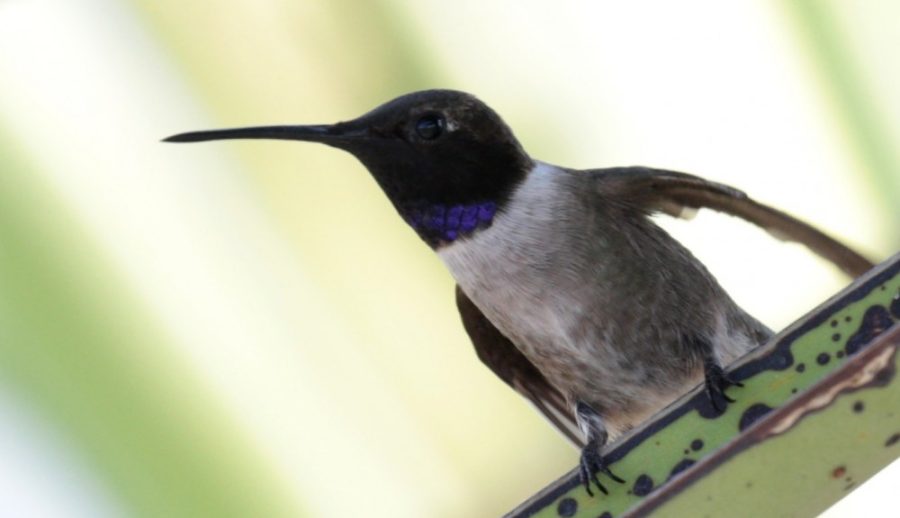Nesting in the trees of the Chiricahua Mountains in Southeast Arizona, the black-chinned hummingbirds have found a solution to keeping their eggs safe.
UA researchers have found that hummingbirds, Mexican Jays and hawks coexist in a trade-mediated cascade, an interconnection where the behavior of the top-level predator directly impacts the behavior of those below it. For the black-chinned hummingbird, that means using the hawk as their winged protector.
Harold Greeney, a UA School of Natural Resources post-doctoral researcher, led a study that was published recently in Science Advances. The researchers were aware that the hummingbirds would cluster their nests near the hawks, but they did not know why.
“The hummingbirds are clustering their nests right beneath the nests of these predatory hawks, and it seemed counter-intuitive because these hawks specialize in eating birds,” Greeney said.
The scientists knew the hawks were not agile enough to catch the hummingbirds, and the amount of energy they would spend trying to reach the hummingbird was not worth the calories. The hawks do however prey on the Mexican Jay, a pigeon-sized bird that enjoys feeding on the nests of other birds including the black-chinned hummingbird.
“What we found was that the hawks swoop down to eat the jays, so the jays don’t want to forage at low levels because they don’t want to be beneath the hawks and get eaten,” Greeney said.
The jays have reacted to this by foraging higher above the ground where they are safer from the hawks. The hawks have created a “cone of safety” for hummingbirds to build their nests in, where they will not be hassled by the jays, according to Greeney.
“The hummingbirds gather around the hawks to get inside the ‘cone of safety,’” Greeney said. “So the whole interaction between these two species that don’t pay any attention to one another is mediated by this middle man: the jays.”
Greeney and his team were able to test their hypothesis through the intervention of coatis, a Central American version of a raccoon. The coatis came and consumed hawk eggs out of their nests over the course of two days. With their nests destroyed, the hawks left the area.
Greeney continued monitoring the hummingbirds and jays during this time, and within two weeks, hundreds of hummingbird nests had been eaten, according to Greeney.
“This was the crowning jewel of the whole story because we now had our proof,” Greeney said. “We showed the spatial change, how the jays behaved and where in the space hummingbirds did well and didn’t. We had all the pieces except what happens when the hawks aren’t there, but now we have that test and that really bumped the whole thing to being so much more exciting.”
Researchers are still unsure of how the hummingbirds know to nest near the hawks. According to Greeney, the hummingbirds may be choosing locations based on the presence of current successful nests. Greeney said he hopes to observe the female hummingbirds to gain insight on how they choose their nesting site.
Lee Dyer, director of the ecology, evolution, and conservation biology graduate program at the University of Nevada, Reno, and coauthor of the study, is excited about the potential impact the study results will have.
“I hope that this work encourages other ecologists to have greater respect for quality natural history observations and also to consider trait-mediated effects at multiple scales,” Dyer said. “Too many ecologists these days have a disdain for natural history and do not spend enough time crashing through the bushes, crawling through the mud, climbing trees or staring into the canopy to see how birds, insects, plants or other organisms are interacting. Harold Greeney does all of these things and that is how he makes important ecological discoveries that enables him to collect rigorous data.”
Follow Kimberlie Wang on Twitter.









